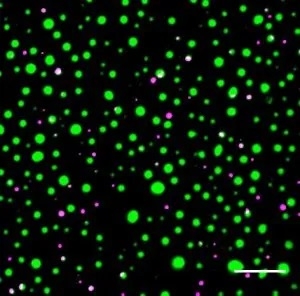MBL Fellow's Research Contributes to 'Breakthroughs of the Year' | Science


Work by MBL Fellow Amy Gladfelter was included in one of ten nominated categories for Science magazine's Breakthrough of the Year.
Announced on Dec. 20, the winning category was Development Cell by Cell. This breakthrough, selected both by Science and by a Reader's Poll, refers to great leaps in scientists' ability to track which genes are switched on in a particular cell, and when, during the embryonic development of an organism.
Gladfelter's work, in the contest category How Cells Marshal Their Contents, contributed to the very hot topic of "phase separations" as an organizing principle within cells. As originally observed at the MBL in 2008, protein and RNA molecules spontaneously condense into membrane-free “droplets” using a phase separation process analogous to oil separating from water. Evidence is emerging, particularly this year, that these liquid droplets perform critical cellular functions. Moreover, if they solidify to a gel-like state it can be a marker of disease, such as the kinds of aggregates that form in neurodegenerative diseases.
Gladfelter's paper showed how specific RNA molecules recognize one another to condense into the same droplet, while others are excluded. Gladfelter, an associate professor at University of North Carolina, Chapel Hill, began this work as part of the HHMI / HCIA Summer Institute at the MBL, a group of 70 scientists who explored this emerging paradigm of cellular organization over five summers of intense, synergistic research.
Working with fungus cells, Gladfelter, Erin M. Langdon and colleagues showed that RNA molecules end up in the same droplet if their 3D structures allow them to bind together through complementary base-pairing.
“RNA molecules will end up in different droplets if their secondary (3D) structures are shielding any complementarity. But with the RNAs that condense into the same droplet, their complementary sequences are really exposed, so they can find each other and base pair to make a higher-order interaction,” Gladfelter says.
Congratulations to the winners and to all of the nominees!